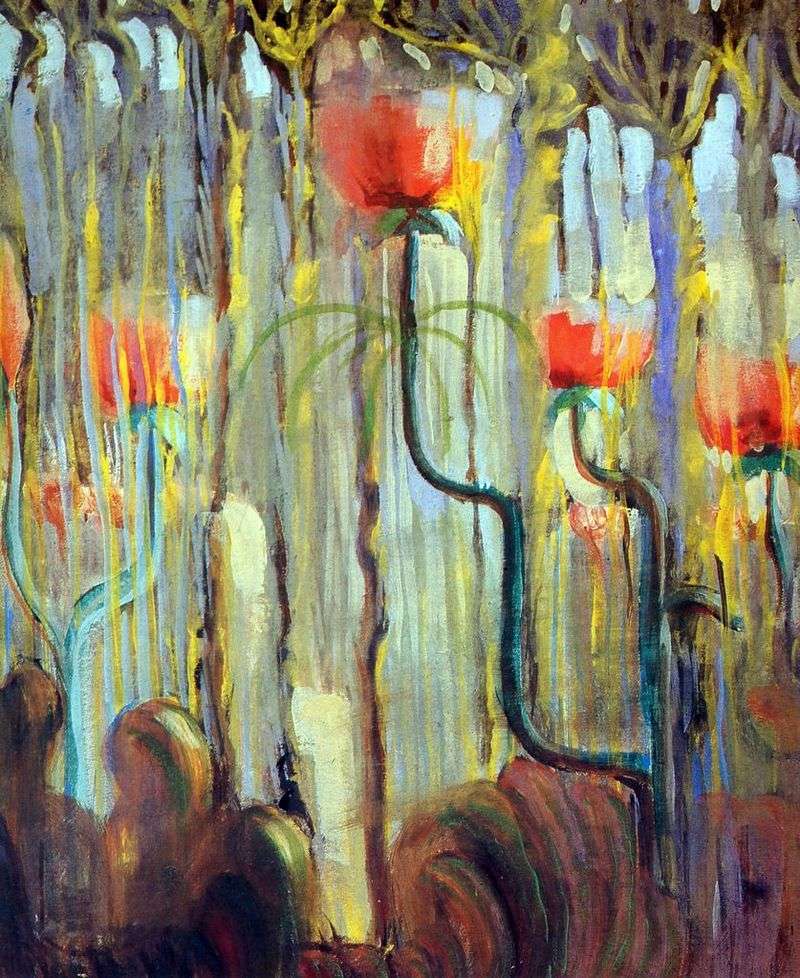
Ciurlionis lived with music – he remained a professional musician and composer, taught pianoforte and his painting always reflected not only his musicality, but reflected, in essence, his life inside musical sounds – inside rhythm, inside melody, inside harmony and timbre. In a letter to his brother there is a listing of the compositions that the artist wrote in the previous few months. This enumeration, which mentions works that were lost today, ends with a line: “Let it be” – a cycle of 13 paintings. “Evaluating these pictures with a remark” very good, “Ciurlionis further writes:” The last cycle is not over, I planned to write it all life, of course, insofar as in the future there will be new thoughts. This is the creation of the world, not ours, according to the Bible, but of some other world – fantastic.
I want to make a cycle of at least 100 pictures, I do not know if I’ll do it. “The cycle remained” not over, “and the number of his paintings did not increase, but a little later Ciurlionis repeated these 13 small sheets, and to date there is a story of two cycles on the same theme. The first of which is referred to in the above letter and called “Let it be” was pastel. It is known that this cycle was exhibited in Petersburg in April 1906. In the same year the artist made a repetition of 13 paintings of the cycle in Tempura and named it “The Creation of the World.” Symboliches the cue “Yes will be!”, giving way to another name, remained, nevertheless, in the form of an inscription in Polish in one of the first in order pictures of the cycle. Whether the repetition was exact copying in the tempura of the first pastel cycle, or we are dealing with a slightly modified or completely new version, it is certainly impossible to say. The second, known to us temperamental version was bought by B. Wolman, from it he got to the Gallery of Ciurlionis, where he is exhibited now. The order of the current hanging-out, like the numbering of pictures of this cycle in the albums of reproductions, does not correspond to the original one. As early as 1926, a photo of the interior was published
The first Lithuanian art exhibition, where you can see how the first pictures of the “Creation of the World” were hung there. The cycle opened with a sheet with the inscription “Let it be!” Ciurlionis’ cyclic works often give rise to the construction of interpretations based precisely on a certain “reading” of the cycle of pictures from the beginning to the end. Ciurlionis admitted that he wanted to write this cycle all his life, write at least 100 paintings. It’s hard to imagine that he was thinking about some consistent plot in which one hundred pictures would have formed into a long, detailed narrative about the process of creation. Symbolic thinking in general, and Čiurlionis in particular, contradicts this kind of assumption: understatement and non-manifestation – whether it be an image or an event – are the main feature in such thinking. Although the artist also claimed, speaking of a series of paintings that it is “not ours,” not a biblical world, in its cycle, too, there is a separation of land and water from the general spatial “hub”. At least in three pictures there is water, the level of its horizon, its reflecting luminous surface with glare and waviness. Above her is the sky with planets or with obliquely running misty clouds.
Coloring and composition techniques, together with the appearance of these details, change as if the first – heroic, full of pathos and intense thought – part of the symphony ended and a lyrical part with melodic beauties, timbre orchestral delights, improvisational ease sounded. Comparison with music is inevitably associated with one of the final paintings, in which there are transparent harps and structures resembling rows of organ tubes. But the musical, as was said before, is also present in the variational form of the cycle, which makes itself felt especially clearly in this “living” part of the created world. Everything here is subject to colorful and rhythmic harmony. The decorativeness of flowers blossoming on these leaves, plants that do not have earth analogies, formations that can be born only in the bosom of free artistic imagination,
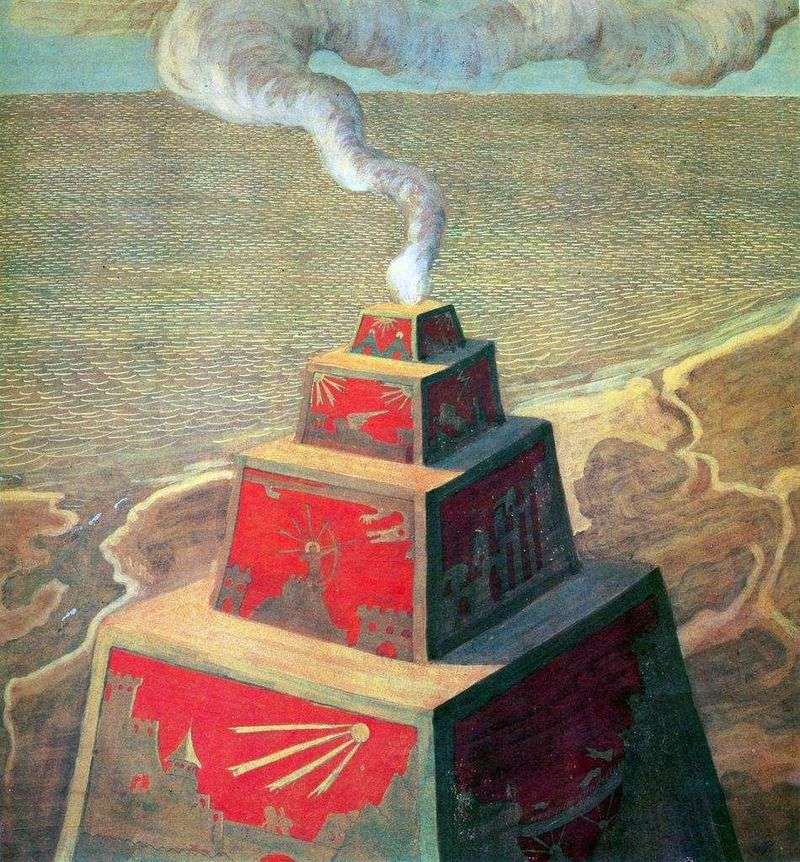 Altar by Mikalojus Ciurlionis
Altar by Mikalojus Ciurlionis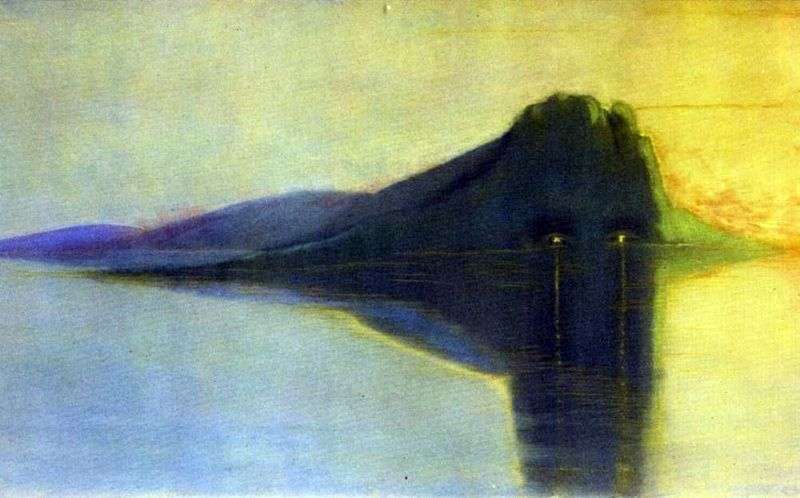 Peace by Mikalojus Ciurlionis
Peace by Mikalojus Ciurlionis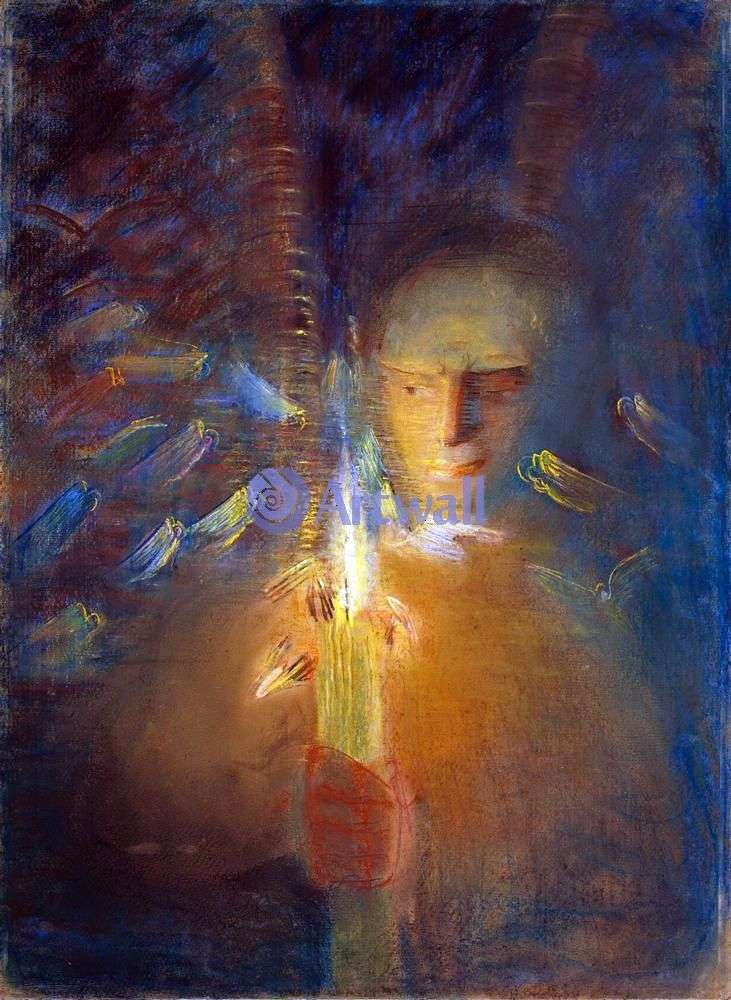 Truth by Mikalojus Ciurlionis
Truth by Mikalojus Ciurlionis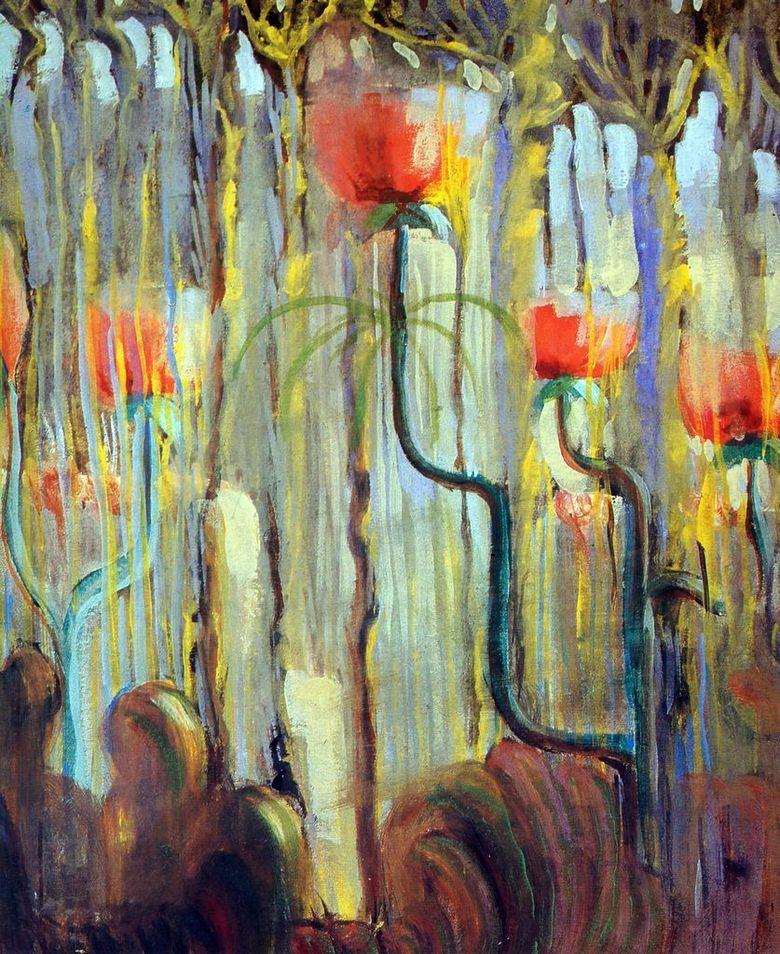 Création du monde. XI – Mikalojs Čiurlionis
Création du monde. XI – Mikalojs Čiurlionis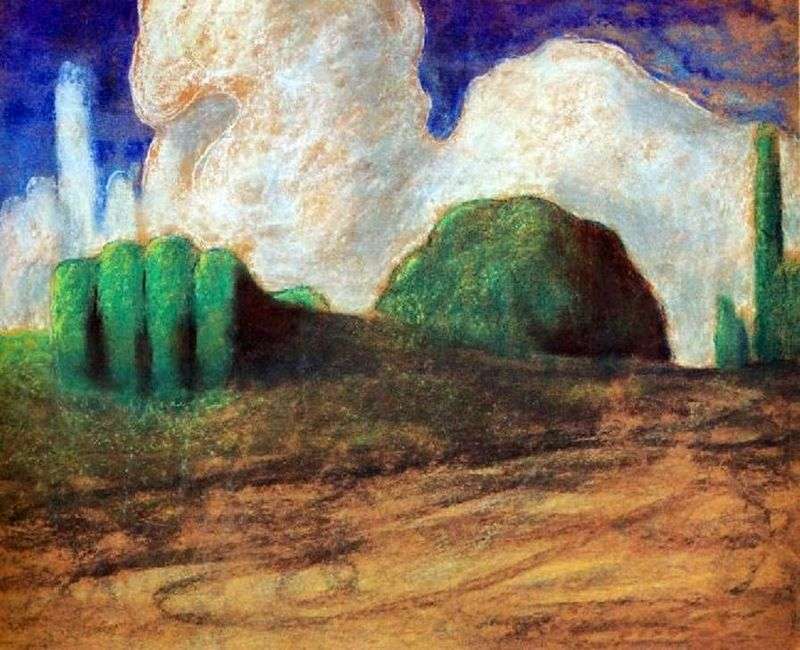 Day by Mikalojus Ciurlionis
Day by Mikalojus Ciurlionis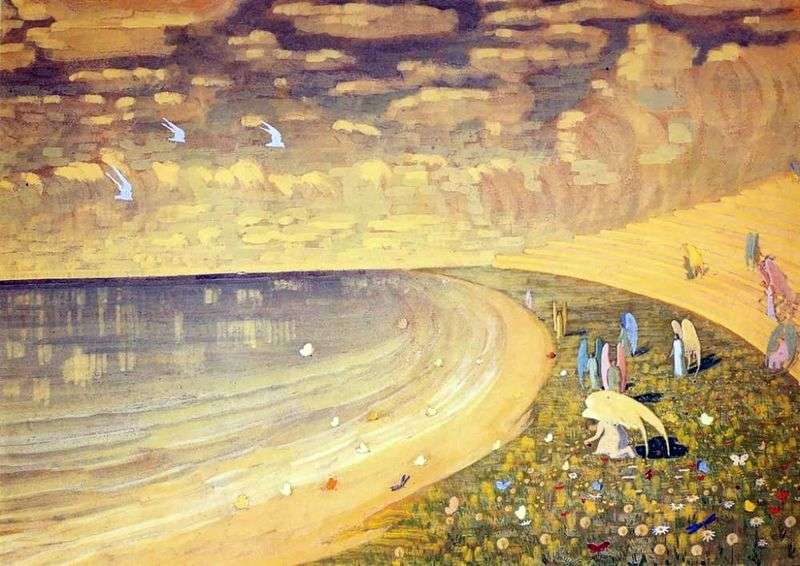 Paradise by Mikalojus Ciurlionis
Paradise by Mikalojus Ciurlionis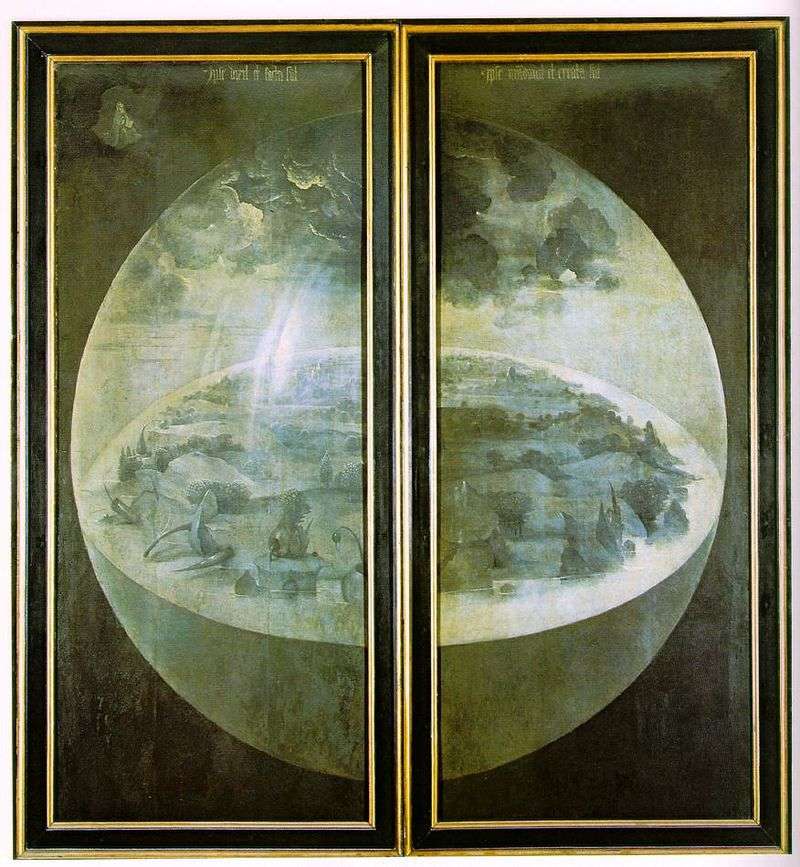 World creation. The outer leaves of the triptych Garden of earthly pleasures by Hieronymus Bosch
World creation. The outer leaves of the triptych Garden of earthly pleasures by Hieronymus Bosch Chaos. The Creation of the World by Ivan Aivazovsky
Chaos. The Creation of the World by Ivan Aivazovsky